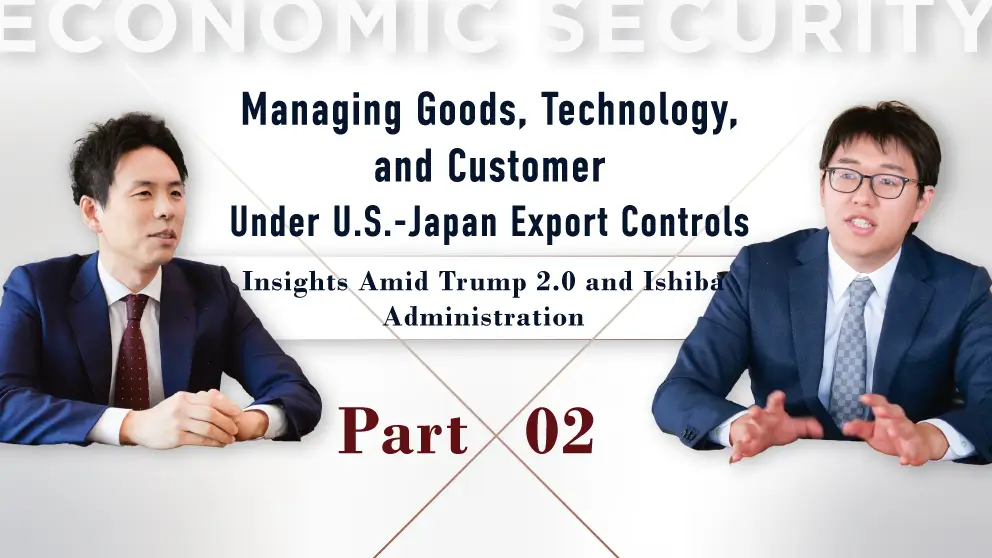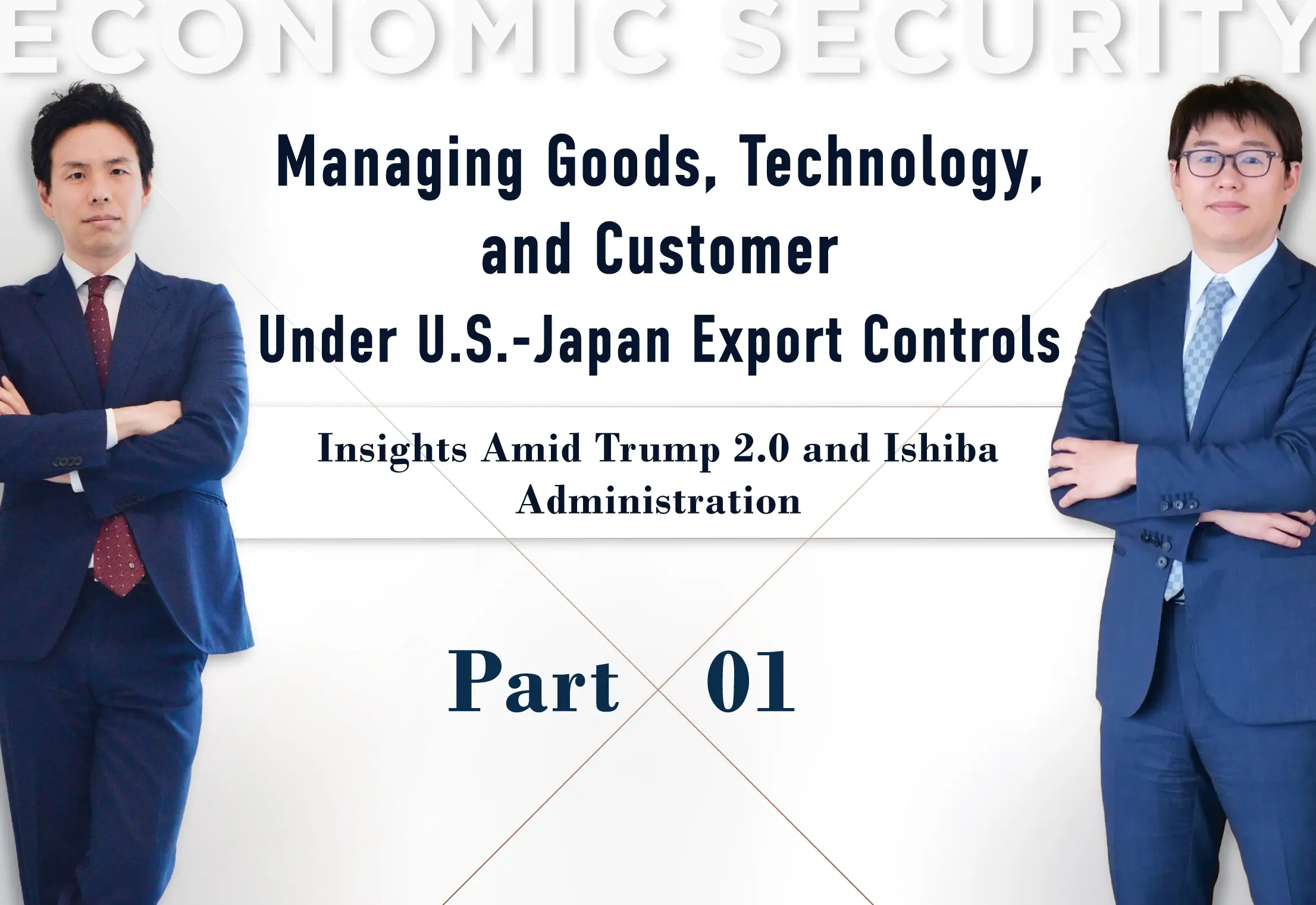




In recent years, various countries have repeatedly strengthened their export control regulations with the primary goal of bolstering economic security, while concurrently imposing sanctions, including export controls, in response to the Russian-Ukraine situation. In this way, export controls are being tightened as part of broader economic sanctions. Under these circumstances, the international distribution networks and supply chains that many Japanese companies have established and developed, based on the premise of a “free and open economy,” face an ever-increasing risk of disruption due to export controls, including economic sanctions, imposed by various countries. In addition, sanctions and other measures imposed by the authorities on violators of export regulations are becoming increasingly stringent each year, and from this perspective as well, further underscoring the importance of regulatory compliance. Oki Osawa, who was seconded to the Trade Control Department of Japan’s Ministry of Economy, Trade and Industry (METI) and has extensive experience in handling matters involving economic security, including export controls and economic sanctions, and Ryosuke Isaji, who has extensive experience in handling numerous matters involving U.S. export controls and sanctions at NO&T’s New York office, regularly collaborate to provide legal services. Drawing on their expertise and experience, this roundtable discussion focuses on U.S.-Japan export controls, recent developments in practice, and in light of such developments, best practices for export control systems and customer management.

Oki Osawa provides comprehensive legal advice on corporate matters, specializing in M&A, corporate restructuring, and general corporate matters, with a particular focus on those involving publicly listed companies. In addition, having previously served at the Ministry of Economy, Trade and Industry (METI), he brings extensive experience in policymaking, regulatory review, and enforcement of economic security regulations, including the Foreign Exchange and Foreign Trade Act. At METI, he also worked to strengthen domestic government collaboration and enhance international cooperation on economic security issues. Drawing on this wealth of experience, Osawa provides not only expert legal advice but also practical, actionable insights across a broad range of economic security matters.

Currently based in New York, Ryosuke provides comprehensive legal advice on corporate matters, with a focus on cross-border M&A between Japan and the United States, U.S. export controls, investment regulations, sanctions laws, and transactions and disputes in the TMT (Technology, Media, and Telecommunications) sector.

Osawa

Isaji

Osawa

Isaji
[Categories of Items Subject to the EAR]
| Categories of Items | Remarks |
|---|---|
| ①All items located in the U.S. | The term “items” includes products, software, and technology. |
| ②All U.S.-origin items | |
| ③Foreign-made items that exceed the applicable de minimis threshold for U.S.-origin items | The de minimis threshold is generally 10% for items ultimately destined for Iran, North Korea, Syria, or Cuba, and 25% for most other destinations. |
| ④Certain foreign direct products manufactured using U.S.-origin technology or software | The term “foreign direct products” refers to primary products or software manufactured outside the U.S. that directly utilize U.S.-origin technology or software. |
| ⑤Certain items manufactured in a non-U.S. plant or facility or using principal equipment that constitutes a foreign-made direct product |

Osawa

Isaji

Osawa

Isaji

Osawa

Isaji

Osawa

Isaji



Osawa

Isaji

Osawa

Isaji

Osawa

Isaji

Osawa

Isaji

Osawa

Isaji


This dialogue is intended to provide brief general information for your reference only and does not constitute legal advice from the firm. The opinions expressed are the personal views of the authors and do not represent the views of the firm. Due to the nature of the information being general information, the citation of the text and sources of laws and regulations may be intentionally omitted. Please always consult a lawyer on issues relating to individual specific cases.